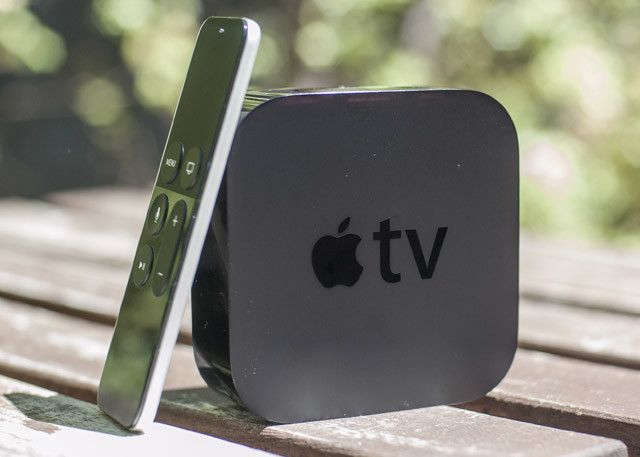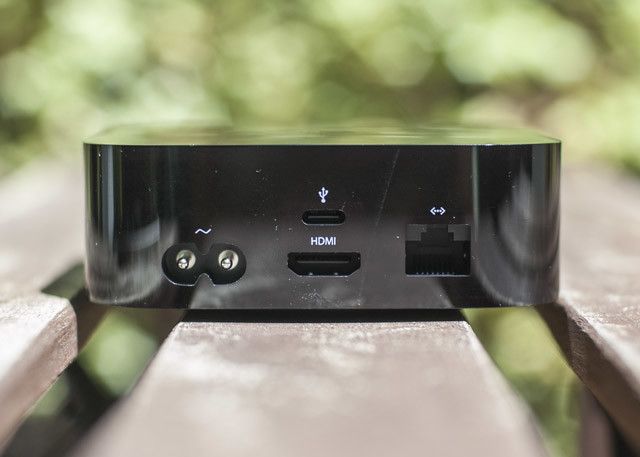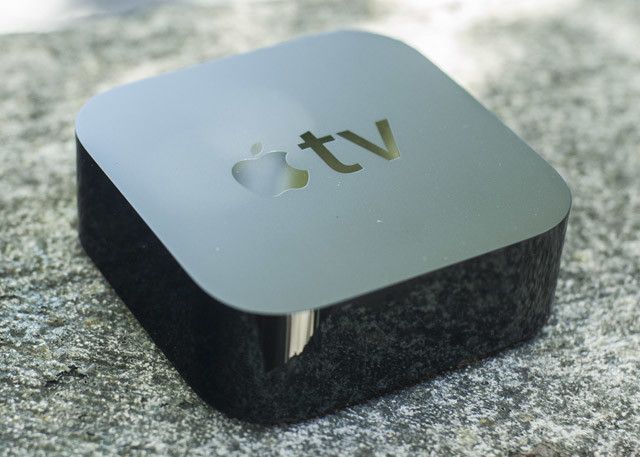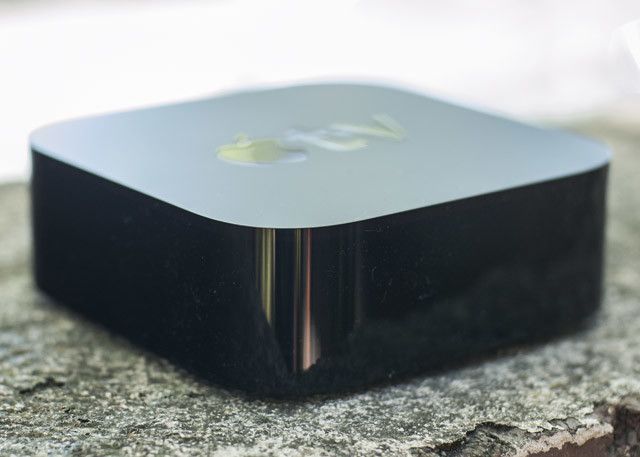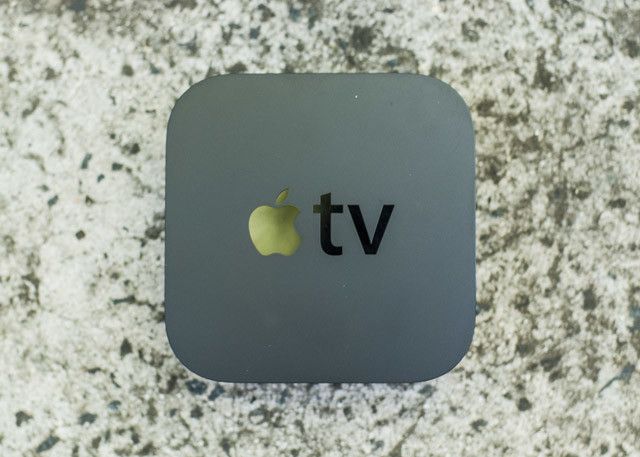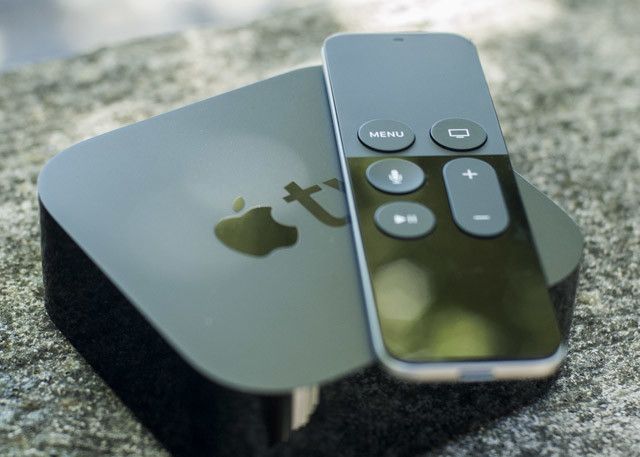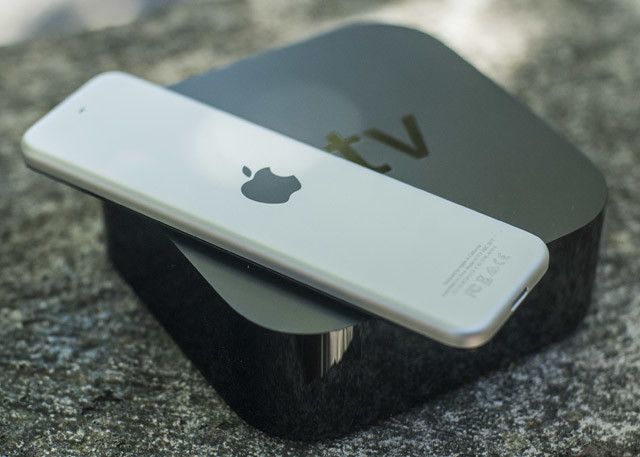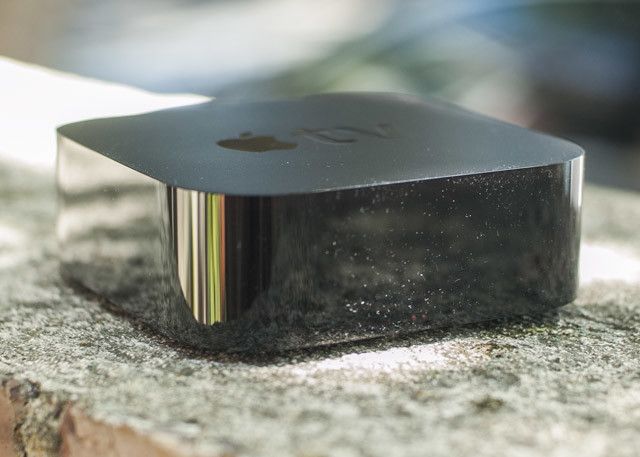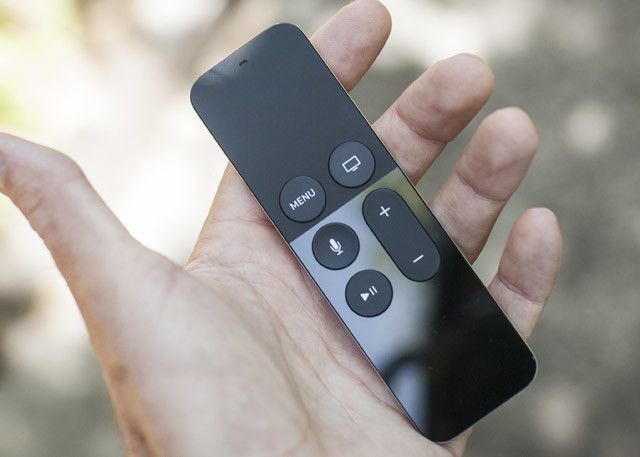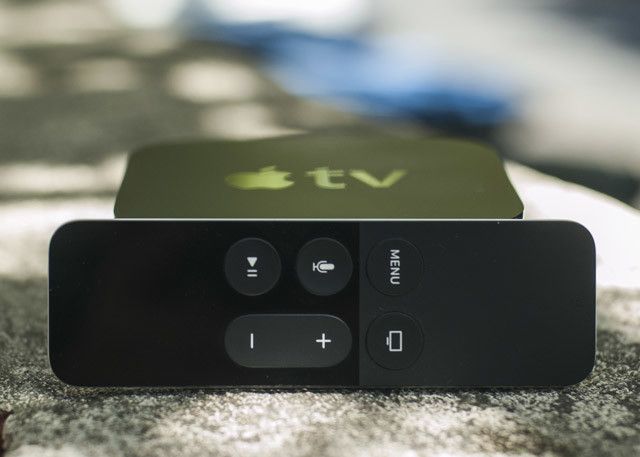Apple TV 2015
After months of speculation about Apple building an actual, glass-and-pixels television, the company unleashed a brand new version of its living room set-top companion instead.
It's been nearly three years since Apple refreshed its relatively inexpensive media streamer, and the latest model is the biggest Apple TV update since the little black box of tricks was first introduced.
With competition from Google's Chromecast and Amazon's FireTV reaching fever pitch, can Cupertino still hold its own in the battle for the space under your TV? Read on to find out.
A Brand New Apple TV
Media streamers are all the rage these days. Many ardent consumers of all things media, including myself, have been waiting for Apple to make a move and update its ageing, and quite frankly disappointing media streamer for a while. I'm not just talking about a faster processor, more RAM and some new channels — the expectations set by Google and Amazon, as well as long-established favourites Roku and a surge of cheap Android "stick PCs" has upped the ante in recent years.
Apple's answer to that competition doesn't just involve new hardware, but a completely new platform. This incorporates a brand new operating system, called tvOS, and a brand new and completely redesigned remote control too. It's radically different to the Apple TV that came before it, while providing much of the same functionality.
Of course, tvOS isn't really that new. It's based on iOS, which is evident from both the user interface and overall simplicity employed throughout. If you're familiar with iOS, you'll pick up tvOS out of the box.
In the box you'll find a shiny black Apple TV, a very thin touch-enabled remote control, a USB-C to lightning cable, and a power cord. There's a distinct lack of HDMI cable, de rigueur for manufacturers of moderately-priced TV accessories in recent years.
The unit itself is available in 32GB and 64GB configurations, with storage space reserved for apps and their data. At present there probably aren't enough apps to fill the 64GB model, at least in terms of apps you're likely to use on a day to day basis. That said, if you're serious about using the Apple TV for more than just watching things, you should probably go for the higher capacity.
You can pick up the Apple TV for $149 and $199 for the 32GB and 64GB models respectively. This positions the streamer at the upper-end of the bracket in terms of competition — with the Chromecast costing a mere $49, FireTV at $99 (currently down to $75) and the Roku 3 at $80. This is hardly surprising — Apple usually targets the higher end of the market, though at this price point I'd say the Apple TV is still pretty affordable.
A Bigger Package
The new Apple TV is bigger than its predecessor in terms of abilities and physical size. Despite the added heft (measuring up at 98mm x 98mm, with a height of 35 mm; weighing in at 425g), it still looks great along recent TV plug-ins like the PlayStation 4 and Xbox One. You could feasibly hide the box from view completely, but you probably won't want to.
It's still a square rectangle with rounded corners that looks just like one of Apple's app icons from iOS or OS X. The added size makes it quite a bit larger than the Chromecast and similar Android-powered USB sticks that have found fancy among users in recent years.
The added space houses the 64-bit A8 chip (the same one found in the iPhone 6), 2GB of RAM, an internal power supply (no power bricks here), 802.11ac wireless and a Bluetooth 4.0 chip. Presumably Apple went for the A8 to keep costs down, and though the A8X found on the iPhone 6s and iPad Air 2 offers more in terms of performance, performance is nothing short of silky smooth.
All that RAM and processing power is put to use in playing H.264 video up to 1080p at 60 frames per second, as well as running fairly simple apps and games in 1080p (no 4K support here). Unlike the iPad Air 2, which has an output resolution of 2048 x 1536, the new Apple TV only outputs at 1920 x 1080 — which goes a little further in explaining why the very latest processor isn't quite so important.
There's not an awful lot going on in terms of the unit itself. You get a single "new MacBook-style" USB-C port, 10/100 Ethernet, and an HDMI port for hooking the unit up to your TV. There's a single white LED on the front, which lets you know when the unit is on, and that's about it.
Rather annoyingly the new Apple TV, just like its predecessor, it still a fingerprint and dust magnet. The shiny piano black sides suck the grease off your fingers from across the room, and the matte black top surface preserves fingerprints better than your local police station. This is a minor point, and one that probably annoyed me more than most regular users as a reviewer.
Now With tvOS
tvOS is just what the Apple TV needed. Instead of a rigid selection of Apple-approved channels, the platform empowers users and service providers with a new app-based approach. The result is a far more personalised streaming solution, where you won't see an exhaustive list of channels you no longer want.
Unfortunately, Apple is still quite heavy-handed in terms of "suggesting" which movies and TV shows you rent and download from iTunes. These appear front-and-center on the home screen, with your own apps and services appearing below.
This brings us to on one of my longstanding criticisms of the Apple TV as a platform. You're still paying money to pay money, though you don't have to of course. tvOS goes a long way towards remedying this — you're more likely to find free-to-air and on-demand services on the new platform, now that developers can port and release their existing iOS apps instead of relying on being included in a device firmware update.
AirPlay support is strong, and continues to work most of the time. The one exception to this was when mirroring my MacBook Pro's screen in 1080p in order to play a video, which resulted in stutters and a frozen image. Unfortunately certain apps don't play nicely with AirPlay either — with one of the main culprits being Facebook. You can't stream video or audio while browsing your feed, which is annoying but certainly not game-changing.
Apple is also positioning its new set-top wonder as a games console, not only including support for AirPlay enabled games (like iOS favourite Worms 3) but also support for games that run on the console itself. A few surprisingly big-name games that have taken to the platform include Disney Infinity 3.0 and Guitar Hero; both of which require third-party accessories to complete the experience.
iOS favourites like SpaceTeam, Oceanhorn, and Jetpack Joyride top the charts, though truth be told there's not a lot to get excited about in terms of gaming on the Apple TV at this stage. Don't for a second think that the Apple TV can stand with the big names in terms of gaming — an Apple PlayStation or Xbox competitor this is not, but it was never meant to be. Freebies like Crossy Road work without a hitch, and the touchpad on the remote control is good enough with no noticeable input lag.
Other apps provide a smattering of additional services, though I question the usefulness of apps like AirBnB on a TV screen. The one app I really wanted to see was VLC, which would add a huge amount of capability in terms of media consumption, but there's no sign of it yet. I've learned to be cynical about such apps making it through Apple's tough selection process, but there are a few premium apps that promise to add support for less-orthodox formats (OneVideo is one such app) — so I'm keeping my fingers crossed.
As is now the norm with Apple's software, accessibility options are exhaustive with full support for VoiceOver, zoom and boldened text for better readability, a "reduce motion" setting that removes all the whooshing animations, and the usual support for closed captioning and subtitles.
Remote Living
By far one of the biggest improvements in this revision is the new remote control, which now includes a touch-friendly clickpad, four separate buttons, and a volume rocker that controls the volume on your TV using the included infrared blaster. My 3-year-old LG TV didn't require any setup whatsoever, but you can disable this from the menu if you really want to.
The new clickpad makes interacting with the Apple TV more "Apple" than ever before, and it's arguably the one of the best improvements over past models. Scrolling around feels great, though it takes a little getting used to and I found myself overshooting icons to begin with.
Fortunately there's a degree of visual feedback provided on screen, as icons tilt along with your touch, which helps "train" the exactitude of your input. It's even possible to increase or decrease touchpad sensitivity in the menu if things aren't quite to your liking. You can also use tap inputs to move left, right, up, and down as if you were using an imaginary directional pad.
Entering text, passwords, and search terms manually can be a fairly laborious process, as Apple has employed a horizontal text input method rather than a QWERTY keyboard. My girlfriend liked this much more than I did, so you may disagree with me when I say it left me yearning for a "proper" keyboard.
Of course, you can always enter text using the official Apple Remote app, which turns your iPhone or iPad into a powerful remote control — exactly how it worked on the last Apple TV. If you own a compatible "Made for iPhone" gamepad, you can also use it to control the unit.
The other way Apple invites you to interact with the new Apple TV is using its digital assistant. There's dedicated Siri button on the new remote, and it works just as you'd expect. Natural, flowing sentences work best — commands like "launch Netflix" or "show me Christmas movies" work, but I couldn't use Siri to "search for American Dad on Netflix" — it consistently told me it couldn't find anything on Netflix, suggesting the iTunes version instead.
Missed Opportunities?
The Apple TV has once again not been designed to conquer all things media, and this is evident from the capabilities left out by Apple. I was hardly surprised to find a complete lack of uPnP media server support, but that doesn't make it any less frustrating. Fortunately there are apps — notably NAStify — which add this functionality, but they're not free and users report mixed results.
Instead, the primary method of streaming your local media falls on Apple's own technology, notably HomeSharing. This will probably act as a barrier for many who are considering the purchase, particularly if you don't use iTunes to manage your media.
A Super Little Package
This is the Apple TV update you've been waiting for, and the already-impressive ecosystem is only set to improve as more developers take to the small screen. As more local on-demand services become available, you'll have more to watch on your TV, without paying a penny. Till then you can use AirPlay to stream from your iPhone or iPad, or cough up iTunes prices and purchase media — if that's your thing.
I'll be buying an Apple TV when it's time to give this one away to a lucky reader, and that's probably the best thing I can say about it. Sure, it's expensive; but it's also powerful, pleasant to use, and thanks to some stunning aerial photography even manages to make screensavers cool again.
[recommend]The perfect addition to the household that loves its iPhones and iPads. Buy it.[/recommend]
Send your products to be reviewed. Contact James Bruce for further details.


